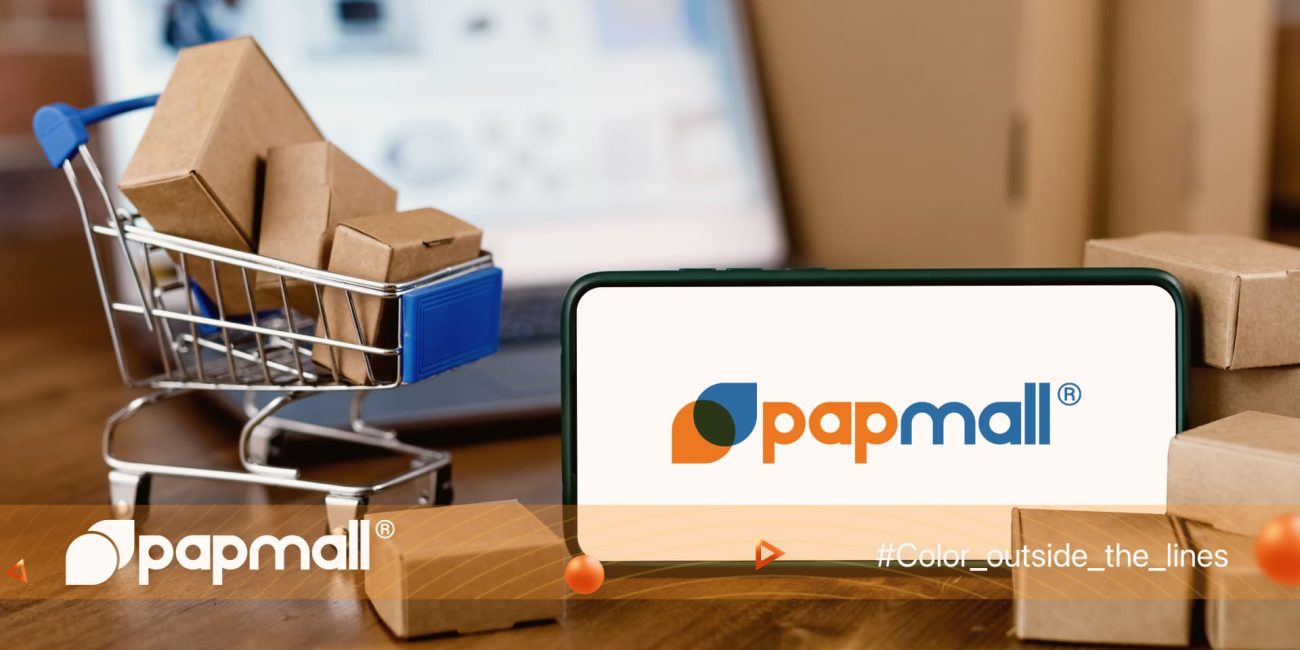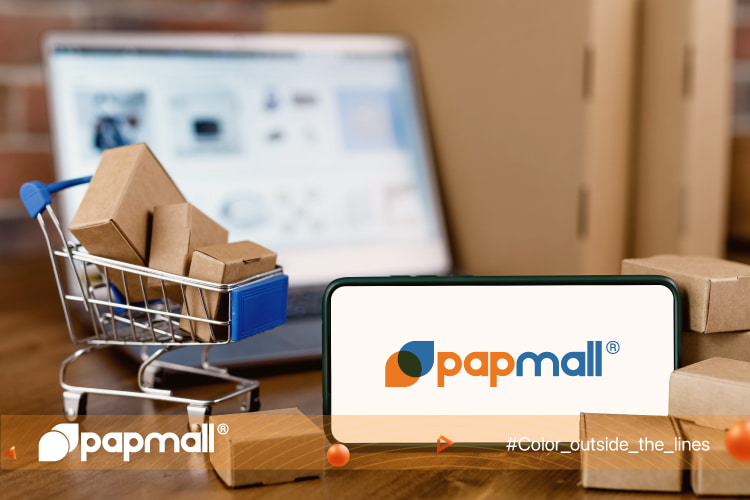What's inside?
The world of e-commerce is a dynamic and ever-changing landscape, influenced by evolving technologies, shifting consumer behaviors, and global events. As we delve into the trends of online shopping in 2023, it’s clear that the digital retail space is experiencing exciting transformations.
Right now, we will take a look at the reasons why online shopping is becoming more popular in the e-commerce industry this year.
Online shopping is undeniably a growing trend in today’s consumer landscape
1. Reasons why online shopping is becoming more popular
Online shopping trend is undeniably growing in today’s consumer landscape. The trend of online shopping has gained remarkable traction due to several compelling reasons.
First and foremost, the ease and convenience it offers play a pivotal role. The ability to browse, compare, and purchase a wide range of products or services from the comfort of one’s home or on-the-go is a significant allure. This trend of online shopping aligns with the fast-paced lifestyle of many individuals, enabling them to save time and effort.
Moreover, the continuous advancements in technology and the ever-expanding online marketplace contribute to the trend of online shopping. The increasing prevalence of e-commerce platforms provides consumers with an expansive selection, often beyond what traditional brick-and-mortar stores can offer.
Furthermore, the increasing prevalence of e-commerce platforms provides consumers with an extensive selection, often surpassing the offerings of traditional brick-and-mortar stores. With numerous advantages including price comparisons, personalized recommendations, and accessible payment options, it’s no wonder that online shopping is a trend witnessing a remarkable ascent.
In 2023, papmall® has gained popularity as a place for those who want to purchase both physical and digital goods. Millions of online customers around the world have trusted and remained loyal to papmall® because of its unrelenting dedication to offering an unrivaled online shopping experience. papmall® stands out for its user-friendly interface, quick shipping, and great customer service while providing a wide range of goods, from fashion and electronics to home decor and beyond.
papmall® stands out for its user-friendly interface, swift delivery, and exceptional customer service.
2. Current online shopping trends shaping the e-commerce industry in 2023
It’s essential to remain on top of the latest online shopping trends impacting the business given how quickly e-commerce is evolving. The following are some of the most significant online shopping trends to watch in 2023:
2.1 Smoother Online Shopping Experiences
For groceries, clothing, pharmaceuticals, and home improvement products, a large portion of internet users still relied on offline sources. However, a significant shift in consumer behavior was compelled by the COVID-19 lockdowns.
The majority of their purchases had to be made online, including food, clothing, electronics, healthcare, personal care items, gym gear, furniture, home decor, vehicle parts, and more.
Customers today are also less patient than ever before at the same time. Online customers want quicker checkouts, alternatives for free shipping, and more seamless shopping experiences, possibly as a result of the stress of remaining at home.
And whenever the offline market picks up speed post-pandemic, it is not anticipated that these new shopping habits will change significantly. E-commerce is all about convenience, and surveys show that more than 60% of respondents want to continue with the online brands they came across when making a flurry of impulsive purchases online. This is an excellent chance to increase customer brand loyalty and convert them into lifelong customers.
2.2 Online shopping on social media channels
Consumers now frequently use social media sites like Facebook and Instagram to find things, do their research, and make purchases. Social commerce enhances the convenience and interaction of shopping, which contributes to its rising popularity.
It’s simple to make purchases over social media thanks to core functionality features like in-app checkout, Buy buttons, and instant messaging facilities.
These four social media apps now have native social commerce features built-in: Facebook, Instagram, Pinterest, and TikTok.
- Nearly 71% of Facebook users worldwide, according to a 2022 research of Insider Intelligence, make at least some of their purchases there. That comes to 59.4 million consumers whom brands may easily target by setting up a Facebook store.
- Additionally, Instagram reports that 20% of users used the app to find new companies, goods, or services in 2020. Additionally, 44% of users shop weekly on the platform.
- Social commerce is even more appropriate for companies whose target market is younger. If the 18 to 34 age range is your target market, they have already started scrolling and are prepared to make purchases.
- The majority of social network users in the US who have made at least one transaction through a social channel are members of Generation Z and millennials in 2021.
2.3 Shopping based on the suggestions from influencers
Influencers have developed into a crucial component of any e-commerce marketing plan in recent years.
Brands invested about $3.7 billion in the US according to a research in 2021, a 33% increase from the previous year. Compared to traditional commercial promotions, influencer-led content is frequently perceived as more real and honest.
In actuality, Matter Communications has released a report showing that 61% of 1,000 US customers in 2020 believe the product advice they receive from influencers. Only 38% of people currently trust branded social media material. And in 2022, compared to 27% for recommendations from friends or family, 30% of consumers now say influencer recommendations are one of the most important elements in their purchasing decisions, said Hubspot.
Additionally, according to Mediakix, 60% of marketers, influencer-generated content outperformed conventional sponsored content.
The idea of the exorbitant fees involved with celebrity influencer sponsorships frequently turns off e-commerce firms. But a larger following is not always a sign of strong involvement.
The highest engagement rates for nano-influencers (5%), according to HypeAuditor, are among those with less than 5,000 followers. As the number of followers soars, engagement appears to decline until it reaches celebrity status (1.6%).
2.4 Sustainable Shopping
Sustainability is no longer a niche concern; it’s a driving force behind consumer choices. Shoppers in 2023 are seeking eco-friendly products and ethical brands. E-commerce businesses are responding by offering sustainable options, reducing packaging waste, and promoting environmentally responsible practices.
The new generation of consumers favors online retailers and brands that uphold moral and ethical standards. The majority of online retailers have made steps to reduce their adverse effects on the environment and vulnerable people throughout the world in order to respect this customer opinion. Over the past ten years or more, this trend has been progressively accelerating. Additionally, it is not going anywhere any time soon given the escalating climate issue.
2.5 The use of augmented reality spread out
Virtual Reality (VR) and Augmented Reality(AR)are gaining popularity. Once a futuristic-sounding idea reserved for gamers and young Snapchat users, AR is now essential for assisting customers in visualizing things they might not be able to see in person. With the use of technology, customers may more easily view the thing they’re purchasing, which aids in decision-making.
Due to its simplicity, AR is predicted to gain popularity; in fact, eMarketer predicts that by 2023, 97 million US citizens will be using AR at least once per month.
2.6 Synchronized Offline and Online Retail
Omnichannel shopping experiences are becoming more seamless. Retailers are integrating their physical and online stores to offer click-and-collect options, real-time inventory updates, and personalized shopping journeys that span both in-store and digital touchpoints.
In 2023, online shopping trends are marked by innovation, sustainability, personalization, and the fusion of technology with retail. To thrive in this dynamic e-commerce landscape, businesses must stay agile and adapt to these evolving consumer preferences. Whether you’re an e-commerce entrepreneur or a savvy shopper, embracing these online shopping trends can enhance your online retail experience in the years to come. As we move forward, keep an eye on emerging technologies and evolving consumer behaviors, as they will continue to shape the future of online shopping trends.
2.7 Mobile purchasing gets more consumer acceptance.
Consumers’ preferred purchasing channel is quickly evolving to include mobile devices. Shoppers are tapping Buy on their gadgets in greater numbers as mobile searches surpass desktop searches (According to Statista, there is 61% of Google search results in 2019 came from a mobile device).
Retail m-commerce sales increased by 15.2% from 2020 to 2021, reaching $359.32 billion. Retail m-commerce sales in the US should more than double by 2025 to $728.28 billion, or 44.2% of retail e-commerce sales.
Despite these projections, traditional e-commerce sales on desktop computers still have a higher average order value than those made through smartphones and tablets.
In comparison to consumers in the US, consumers in Europe, the UK, the Middle East, and Africa feel more at ease checking out greater basket values. Online orders made through a mobile device in the US during Q2 2022 had an average value of about $112 compared to just under $95 in the EMEA area. According to these statistics, e-commerce firms that prioritize the creation of user-friendly mobile websites and apps will be in the greatest position to increase the conversion rate of mobile shoppers.
Building incredibly responsive, user-friendly mobile sites is one approach for firms to draw in more mobile customers. Brands must put a high priority on mobile-friendly designs that make it easier for customers to locate what they’re looking for if they want to stand out in a crowded market.
3. How to take advantage of those current online shopping trends.
At papmall®, embracing the evolving landscape of online shopping trends in 2023 is a strategic move for sellers looking to thrive in the digital marketplace.
The digital realm has witnessed a significant shift in consumer behavior, with convenience reigning as a paramount factor. To capitalize on this trend, sellers must prioritize seamless user experiences, mobile optimization, and personalized recommendations. Utilizing cutting-edge technologies like AI-powered chatbots and machine learning algorithms can enhance customer engagement and streamline purchase processes.
Additionally, cultivating a strong online presence through social media integration, influencer collaborations, and targeted advertising will amplify brand visibility and attract a wider customer base. By understanding and adapting to the changing dynamics of online shopping trends, sellers can optimize their strategies and create a shopping experience that resonates with the demands of modern consumers. Visit papmall® to unlock opportunities and stay ahead in this rapidly evolving online marketplace.



